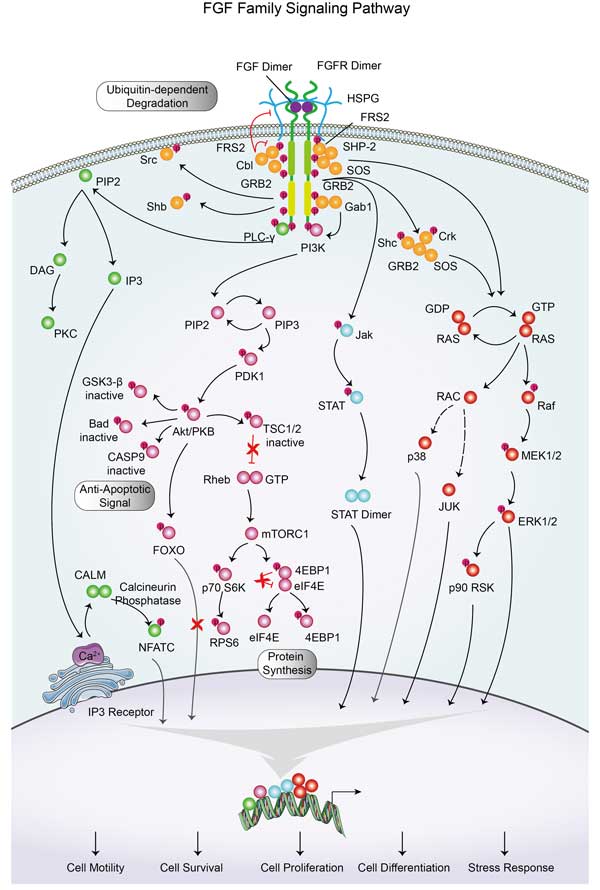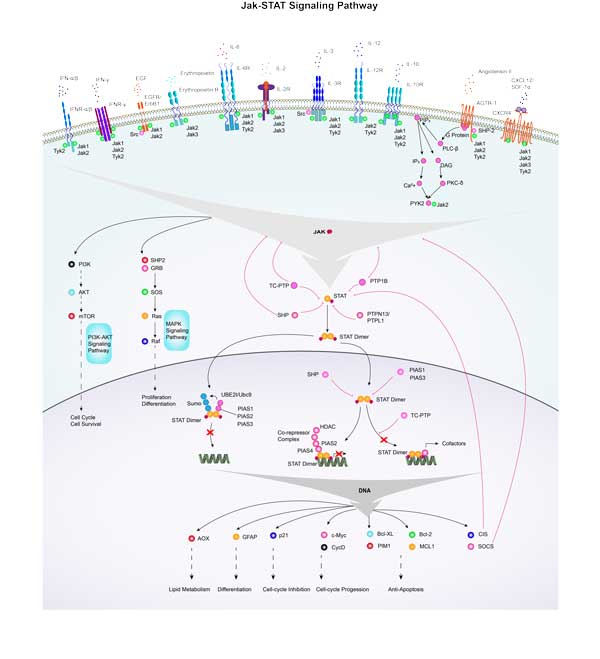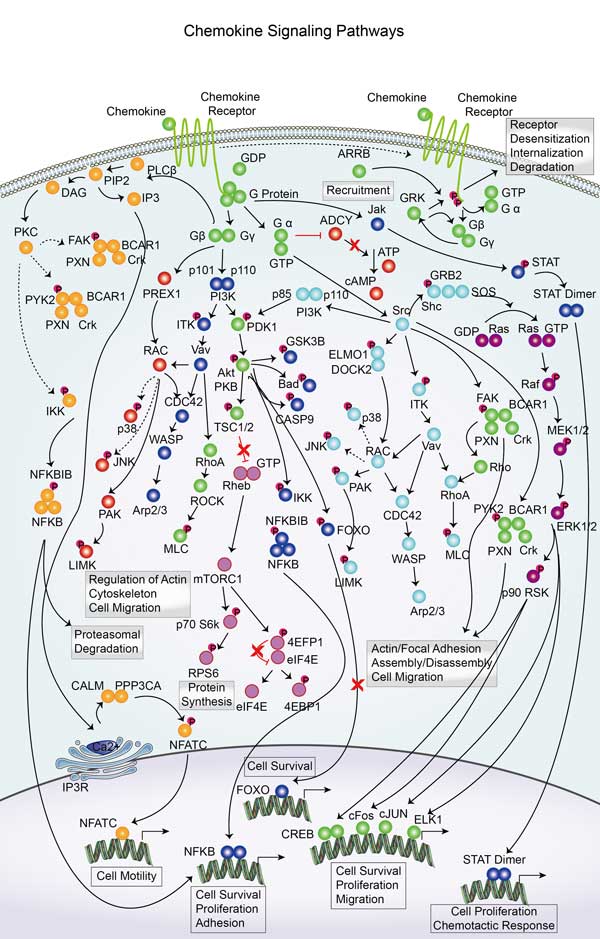JAK2
-
Official Full Name
JAK2 Janus kinase 2 -
Synonyms
JAK2;Janus kinase 2;tyrosine-protein kinase JAK2;JTK10;JAK-2;Janus kinase 2 (a protein tyrosine kinase);THCYT3
Recombinant Proteins
- Human
- Mouse
- Rat
- Chicken
- Rhesus macaque
- HEK293
- E.coli
- Insect Cells
- Sf9 Cells
- Mammalian Cells
- Avi
- Fc
- His
- GST
- MBP
- Flag
- DDK
- Myc
Background
What is JAK2 Protein?
JAK2 gene (Janus kinase 2) is a protein coding gene which situated on the short arm of chromosome 9 at locus 9p24. This gene encodes a non-receptor tyrosine kinase that plays a central role in cytokine and growth factor signalling. The primary isoform of this protein has an N-terminal FERM domain that is required for erythropoietin receptor association, an SH2 domain that binds STAT transcription factors, a pseudokinase domain and a C-terminal tyrosine kinase domain. Cytokine binding induces autophosphorylation and activation of this kinase. This kinase then recruits and phosphorylates signal transducer and activator of transcription (STAT) proteins. Growth factors like TGF-beta 1 also induce phosphorylation and activation of this kinase and translocation of downstream STAT proteins to the nucleus where they influence gene transcription. The JAK2 protein is consisted of 1132 amino acids and JAK2 molecular weight is approximately 130.7 kDa.
What is the Function of JAK2 Protein?
JAK2 is involved in the transduction of various cytokine and growth factor signals. When a cytokine binds to its receptor, JAK2 is activated, which in turn activates downstream signaling pathways, such as the JAK-STAT pathway. JAK2 promotes cell proliferation, differentiation and survival by activating transcription factors such as STAT proteins. JAK2 plays an important role in the development and function of immune cells, influencing the regulation of immune responses. JAK2 is also involved in cellular responses to stress, including responses to hypoxia, nutrient deficiency, and cytokine deprivation. JAK2 is involved in the regulation of gene expression by influencing the phosphorylation of transcription factors.
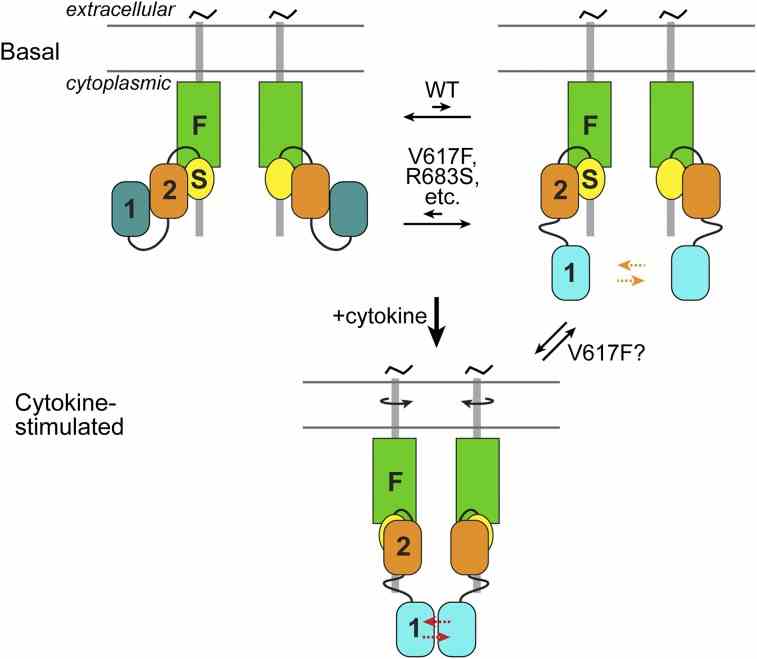
Fig1. Schematic of JAK2 activation. (Olli Silvennoinen, 2015)
JAK2 Related Signaling Pathway
The main function of JAK2 is to participate in the JAK-STAT signaling pathway. When a cytokine or growth factor binds to its receptor, JAK2 is activated and phosphorylates the STAT protein, which diomerizes and moves into the nucleus, regulating the expression of specific genes. JAK2 is involved in the transduction of various cytokine signals, such as interferon and growth factors, which affect cell proliferation, differentiation and survival. JAK2 plays a key role in the development and function of immune cells, especially T cells and natural killer (NK) cells, and is involved in the regulation of immune responses. JAK2 is involved in cellular responses to a variety of stresses, including responses to hypoxia, nutrient deficiency, and cytokine deprivation. JAK2 is also involved in the regulation of apoptosis, and the abnormal activity of JAK2 may lead to the imbalance of apoptosis.
JAK2 Related Diseases
GOF mutations in the JAK2 gene are a molecular feature of a variety of myeloproliferative tumors, such as polycythemia vera (PV), essential thrombocythemia (ET), and myelofibrosis (MF), which are characterized by excessive proliferation of blood cells. Loss of JAK3 is associated with severe combined immunodeficiency (SCID), and certain mutations in JAK1 are also associated with immunodeficiency. Certain variants of the JAK2 gene have been linked to autoimmune diseases such as rheumatoid arthritis (RA), for which JAK inhibitors have been used. The function of JAK2 protein is also associated with a number of other diseases, such as systemic lupus erythematosus (SLE) and Sjogren's syndrome.
Bioapplications of JAK2
With a better understanding of JAK2 activation mechanisms, the development of JAK inhibitors has opened up new avenues, including multi-target drugs and local therapies, as well as targeted protein degradation strategies. JAK2 is a popular target for drug development, and several JAK inhibitors have been approved for the treatment of different diseases, while several other inhibitors are in clinical trials. JAK2 inhibitors such as Ruxolitinib Phosphate are approved in 18 countries for the treatment of a variety of diseases, including polycythemia vera and primary myelofibrosis. JAK2 inhibitors are also used in the treatment of rheumatoid arthritis (RA), psoriasis and other autoimmune diseases, of which Tofacitinib is the first JAK inhibitor approved for the treatment of RA and inflammatory bowel disease (IBD).
Case Study
Case Study 1: Sivahari Prasad Gorantla, 2024
Treatment with the potent JAK1/JAK2-specific inhibitor, ruxolitinib, significantly reduces tumor burden; however, ruxolitinib treatment does not fully eradicate the malignant clone. As the molecular basis for the disease persistence is not well understood, researchers set out to gain new insights by generating ruxolitinib-resistant cell lines. Surprisingly, these cells harbor a 45 kDa JAK2 variant (FERM-JAK2) consisting of the N-terminal FERM domain directly fused to the C-terminal kinase domain in 80% of sublines resistant to ruxolitinib. At the molecular level, FERM-JAK2 is able to directly bind and activate STAT5 in the absence of cytokine receptors. Furthermore, phosphorylation of activation-loop tyrosines is dispensable for FERM-JAK2-mediated STAT5 activation and cellular transformation, in contrast to JAK2-V617F. As a result, FERM-JAK2 is highly resistant to several ATP-competitive JAK2 inhibitors, whereas it is particularly sensitive to HSP90 inhibition.
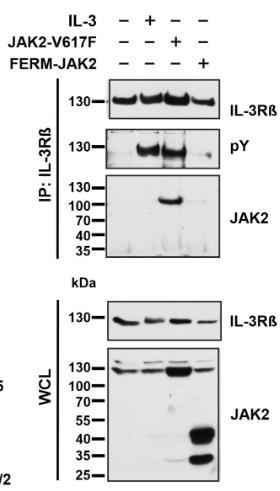
Fig1. IL-3Rβ immunoprecipitation (IP) analysis of Ba/F3 cells expressing FERM-JAK2 or JAK2-V617F.
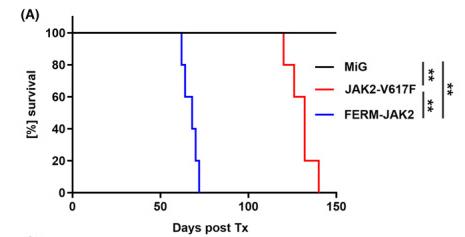
Fig2. Kaplan–Meier survival plot of recipient mice, FERM-JAK2 mice display accelerated disease.
Case Study 2: Aashirwad Shahi, 2022
JAK2 is cytokine-activated non-receptor tyrosine kinase. Although JAK2 is mainly localized at the plasma membrane, it is also present on the centrosome. In this study, JAK2 localization to the centrosome depends on the SH2 domain and intact kinase activity. Researchers created JAK2 mutants deficient in centrosomal localization ΔSH2, K882E and (ΔSH2, K882E). JAK2 WT clone strongly enhances cell proliferation as compared to control cells while JAK2 clones ΔSH2, K882E and (ΔSH2, K882E) proliferate slower than JAK2 WT cells. These mutant clones also progress much slower through the cell cycle as compared to JAK2 WT clone and the enhanced proliferation of JAK2 WT cells is accompanied by increased S -> G2 progression. Both the SH2 domain and the kinase activity of JAK2 play a role in prolactin-dependent activation of JAK2 substrate STAT5. JAK2 is an important regulator of centrosome function as the SH2 domain of JAK2 regulates centrosome amplification. The cells overexpressing ΔSH2 and (ΔSH2, K-E) JAK2 have almost three-fold the amplified centrosomes of WT cells. In contrast, the kinase activity of JAK2 is dispensable for centrosome amplification.
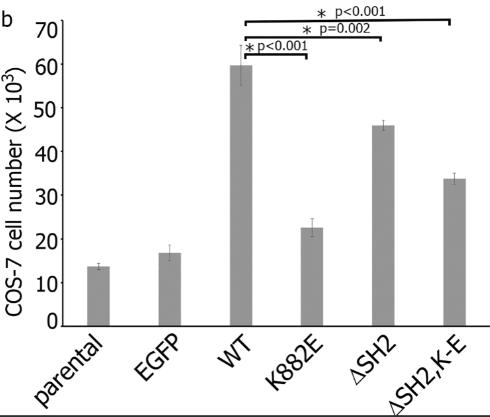
Fig3. Proliferation of COS-7 clones.
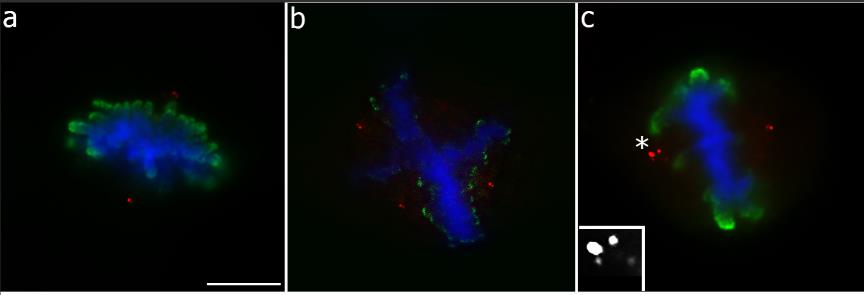
Fig4. JAK2 regulates centrosome amplification and the SH2 domain of JAK2 is required for that.
Quality Guarantee
High Purity
.jpg)
Fig1. SDS-PAGE (JAK2-116H)
.
.jpg)
Fig2. SDS-PAGE (JAK2-28H)
Involved Pathway
JAK2 involved in several pathways and played different roles in them. We selected most pathways JAK2 participated on our site, such as AGE/RAGE pathway,ARMS-mediated activation,Adipocytokine signaling pathway, which may be useful for your reference. Also, other proteins which involved in the same pathway with JAK2 were listed below. Creative BioMart supplied nearly all the proteins listed, you can search them on our site.
| Pathway Name | Pathway Related Protein |
|---|---|
| Axon guidance | EFNB2,CDK5R1B,ARHGEF12,SEMA3E,SEMA4B,GPC1A,CAP1,EPHB6,PEA15A,ANK2B |
| Chemokine signaling pathway | ROCK1,MAP2K1,CCL23,FGR,CCL1,PRKACB,XCL1,PIK3R3,Adcy4,GRK4 |
| BDNF signaling pathway | DPYSL2,CNR1,SIRPA,CDK5,KCNN2,IGF2BP1,MAP3K2,EIF4E,DOK5,GRIP1 |
| AGE/RAGE pathway | TIRAP,MAPK14,ATF2,MMP13,CHUK,LGALS3,AGER,EGFR,DDOST,JUN |
| Cholinergic synapse | GNG13,CHRM1,CHRM5,KCNQ2,GNA11,GNG10,CAMK4,GNG3,SLC5A7,PRKCB |
| CXCR4-mediated signaling events | CRK,MAPKAP1,CFL1,BLK,ARR3,DNM1,GNA13,ADRBK1,GNB2L1,PAG1 |
| ARMS-mediated activation | DUSP1,SPNA1,FRS2A,PEA15A,JAK3,PAQR3B,LAMTOR2,SPRED3,PSMD14,DUSP5 |
| Adipocytokine signaling pathway | IKBKG,RELA,RXRBA,ACSL1A,PRKAG3,MAPK9,PRKAB2,CAMKK1A,AGRP,JAK2A |
Protein Function
JAK2 has several biochemical functions, for example, ATP binding,SH2 domain binding,acetylcholine receptor binding. Some of the functions are cooperated with other proteins, some of the functions could acted by JAK2 itself. We selected most functions JAK2 had, and list some proteins which have the same functions with JAK2. You can find most of the proteins on our site.
| Function | Related Protein |
|---|---|
| non-membrane spanning protein tyrosine kinase activity | FES,PTK2AA,PKDCC,LYN,FRK,PTK2B,WEE2,SRC,PTK2BB,STYK1 |
| protein kinase activity | SRPK1B,PRKCBB,HIPK2,KALRN,PRKCA,cka1,STK24B,GM711,PKDCC,TLK1A |
| peptide hormone receptor binding | PTHLH,RUNDC3A,ADCYAP1,PTH,PTHLHA,FYN,LEP,PTPN11,NPPA,NPPC |
| protein binding | TUSC2,STX8,AKAP9,SELPLG,UBE2D2A,APLP2,KLHDC5,ZNF434,GPR143,RPS20 |
| ATP binding | MKNK2,PDPK1B,IFIH1,DDX49,STK3,EHD4,MYH15,SETX,UBE2Q2,PCCA |
| heme binding | CYP4F2,CYP2U1,CYP26A1,PGRMC2,CYP46A1.1,MPX,CYP4V2,CYP2C18,HBBE2,HMOX1 |
| SH2 domain binding | NLK,DAG1,CTR9,SH3PXD2B,INPPL1,PAG1,SHCBP1,ARHGAP5,SYP,TRPV4 |
| acetylcholine receptor binding | APP,UBXN2A,KCNS1,NRXN1,RIC3,DLG4,RAPSN,RER1 |
| receptor binding | NRG4,LGI1,PVRL1A,WNT11R,SERPINE1,GNB2L1,MSTN,HNF4A,PICK1,NRG2B |
Interacting Protein
JAK2 has direct interactions with proteins and molecules. Those interactions were detected by several methods such as yeast two hybrid, co-IP, pull-down and so on. We selected proteins and molecules interacted with JAK2 here. Most of them are supplied by our site. Hope this information will be useful for your research of JAK2.
PTPN1;CSF2RB;MPL;SH2B1;saicar;EGFR;PKM
JAK2 Related Signal Pathway
Resources
Gene Families
Research Area
Related Services
Related Products
References
- Rath, T; Billmeier, U; et al. From physiology to disease and targeted therapy: interleukin-6 in inflammation and inflammation-associated carcinogenesis. ARCHIVES OF TOXICOLOGY 89:541-554(2015).
- Lan, HN; Jiang, HL; et al. Development and Characterization of a Novel Anti-idiotypic Monoclonal Antibody to Growth Hormone, Which Can Mimic Physiological Functions of Growth Hormone in Primary Porcine Hepatocytes. ASIAN-AUSTRALASIAN JOURNAL OF ANIMAL SCIENCES 28:573-583(2015).


